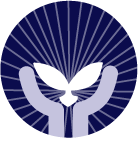Rebecca Paluzzi
Memories
What I learned from Dr. Suzuki
SAA conference May 2018
In Dr. Suzuki’s studio in Matsumoto, a picture of Fritz Kreisler gazed down at us from a place of honor on the wall. Dr. Suzuki referred to Kreisler as the “real” teacher for his students and advised them to keep their bow on the “Kreisler Highway.” Many of you are familiar with Craig Timmerman’s book entitled Journey Down the Kreisler Highway. Being a flutist rather than a violinist, I characterize myself as being a Hitchhiker on the Kreisler highway, eavesdropping as it were.
During the years that I studied in Japan, I was fortunate to have the opportunity to sit in on Dr. Suzuki’s group class for violin teachers every day, and to observe him teaching the kenkyusei lessons. I was also fortunate to have the chance during the first few years to watch him teach children.
What I learned from Dr. Suzuki falls into at least two categories: Things I learned about how to teach, how to nurture each child, and inspire excellence. These were the things I had hoped and expected to learn. But there was also the unexpected. I also learned how to play flute from watching a violin class! Big surprise!
I would now like to share a few thoughts about Suzuki spirit, Suzuki Philosophy, and the development of a noble heart.
I learned from Dr. Suzuki that inclusion and belonging do not have to be earned or deserved. Dr. Suzuki’s welcome into the group was both generous and unconditional. From the very beginning, you were part of the family.
Newcomers and visitors to the Kaikan were treated like royalty on their first day at the school. Kenkyusei were sent to the train station to greet new students and guests and escort them back to the school. They were seated with Dr. Suzuki at Monday Concert and were served tea with him.
Dr. Suzuki was also extremely generous. After teaching lessons all morning, Dr. Suzuki, would often invite the entire room full of students and observers to go across the street for lunch with him, his treat. If he was unable to go, he would give his wallet to someone so that they could pay for everyone’s lunch.
By watching Dr. Suzuki, I learned that tiny children’s attention could be unfailingly riveted on a teacher who engaged them and whose love and respect was being lavished on them. One of Mr. Takahashi’s favorite photos is a picture of Dr. Suzuki in his late 80s or early 90s kneeling on the stage during a group lesson, completely surrounded by very young children who could not take their eyes off him and were clearly trying to get as close as possible. He brought himself down to their level physically and brought himself up to their sense of wonder and awe.
I learned that the use of loving humor made it possible for a student, whether they were a child or an adult, to grasp and stick with the hard work of mastering a challenging task. His humor was evident in his sayings, such as, “Practice only on the days that you eat,” and “Please say, ‘My tone is too small,’” followed by, “Yes, I think so!” Then he would chuckle, and the correction was accepted without reproach. Change happened with grace in this loving, warm environment.
I experienced this humor unexpectedly. One day, Dr. Suzuki came in during my lesson to tell Mr. Takahashi that there was a phone call for him. When Mr. Takahashi stepped out of the room, Dr. Suzuki walked into the room and put two pieces of chocolate on my music stand. Then he said, “Perhaps that will help you play much better!”
After all, he referred to his school as The Music and Cookie Conservatory!
Dr. Suzuki showed me how much can be learned by watching lessons and classes on instruments that are not your own. Much of what I now embrace as flute technique I actually learned from Dr. Suzuki’s violin classes and lessons. Every aspect of playing the flute is completely invisible to the player, and nearly everything is also invisible to the teacher. Dr. Suzuki’s focus on one point in each group lesson for the teachers gave me an aural model, but also a very visual representation of what I could do with my flutist’s “Breath Bow.”
I learned how to make ringing pizzicato so that the entire instrument reverberated and resonated. I learned the lightness and lift of up-bow staccato. I learned how to play with an upside-down bow so that I could have as much power at the tip as at the frog. This required some special imagination on the flute! I even learned what playing with “low elbow” meant for a flutist. Flute “Panda” is possible!
All of this is to say that I learned how very much we can learn from each other.
I learned from Dr. Suzuki that even the world’s foremost authority on the subject could still find much to learn. Dr. Suzuki arrived at the school every morning with a big smile and an announcement— “I have a new idea!” The fact is that by the time he arrived at the school at 9 o’clock, he would have already been working since 3 AM. He was pondering new ways to help raise the children’s ability “so high.” Since there was no limit to the concept of “so high,” Dr. Suzuki kept researching, and this dedication always led him to new ideas and techniques.
I’m so grateful to have had the chance to spend time with this amazing man. When I graduated in Matsumoto and read the teachers pledge to him on the stage, it was the most meaningful graduation of my life, and the one of which I am most proud, and it was a pledge that I try to live up to every day.
Thank you, Dr. Suzuki!

